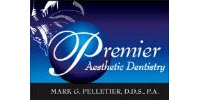Call (803) 781-7901
Preventing Baby Bottle Tooth Decay or Baby Bottle Syndrome in Your Children
The Oral Health Hazard of Baby Bottle Syndrome
Baby bottle tooth decay is a condition resulting from frequent and long-term exposure of baby teeth to sugar-containing liquids, from sodas and sweetened drinks to baby formula, milk, fruit juice, and even breast milk. It doesn't matter whether the liquid is artificially sweetened or contains natural sugars. Breast-fed infants with prolonged feeding habits are also at risk in developing this condition. Baby bottle tooth decay may also be called baby bottle syndrome or bottle rot.
Bacteria found in plaque feed off the sugar in these liquids producing an acid byproduct. Acid attacks the gums and teeth, putting children at risk of tooth decay. If left untreated, the potential for pain and infection exists. Long-term effects include crooked teeth, speech problems, poor eating habits, and damaged adult teeth with the potential for tooth loss.
Tips to preventing baby bottle tooth decay or baby bottle syndrome
- Do not put a child to bed with anything other than water. While an infant may suck on a bottle while falling asleep, it is very important to remove bottles containing either artificial or natural sugars before napping or at night. During sleep, the amount of saliva decreases, and sugars from the drink coat the gums and teeth for an extended amount of time, increasing the chance of cavities.
- Daily cleaning and massaging a child's gums help establish healthy teeth, as well as provide special comfort while teething. At least once a day, moisten a gauze square or washcloth and gently rub your baby's gums.
- As baby teeth appear, brush them gently with a soft toothbrush and do not use toothpaste until two years of age.
- Wean children from bottles whenever they can drink from a cup. However, pediatric dentists recommend waiting until children are at least 6 to 12 months to provide adequate time for strengthening facial muscles developed by the sucking motion from a bottle or breast.
- Take "baby" steps for achieving good oral health. To help in the weaning of sugar-containing liquids, gradually dilute the bottle's contents with water over a two- to three-week period. If your child still is using a bottle after that time, fill it with water since it's the only liquid which doesn't pose any risk for baby bottle tooth decay or baby bottle syndrome. You could also give your child a clean pacifier recommended by your child's dentist. Be sure to check with your child's physician regarding any changes in feeding routines.
- Between the ages of 6 to 12 months, schedule your child's first visit to the pediatric dentist.
Stop baby bottle tooth decay or baby bottle syndrome before it starts! Follow these prevention tips for optimal oral health.
By Brian J. Gray, DDS, MAGD, FICO
Call for an appointment:
(803) 781-7901
Make an Appointment
Get the SMILE of your DREAMS!!
HOW LONG HAS IT BEEN SINCE YOU HAD YOUR LAST CHECK-UP?
IF IT HAS BEEN MORE THAN 6 MONTHS CALL US TODAY






